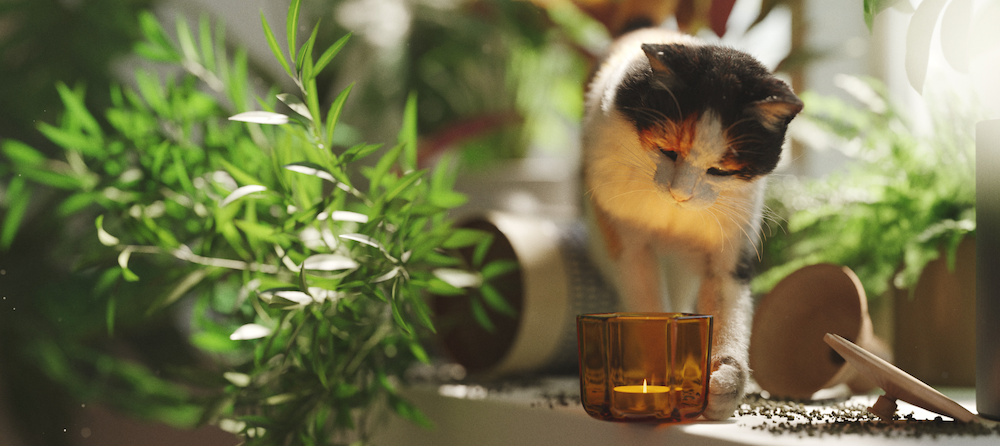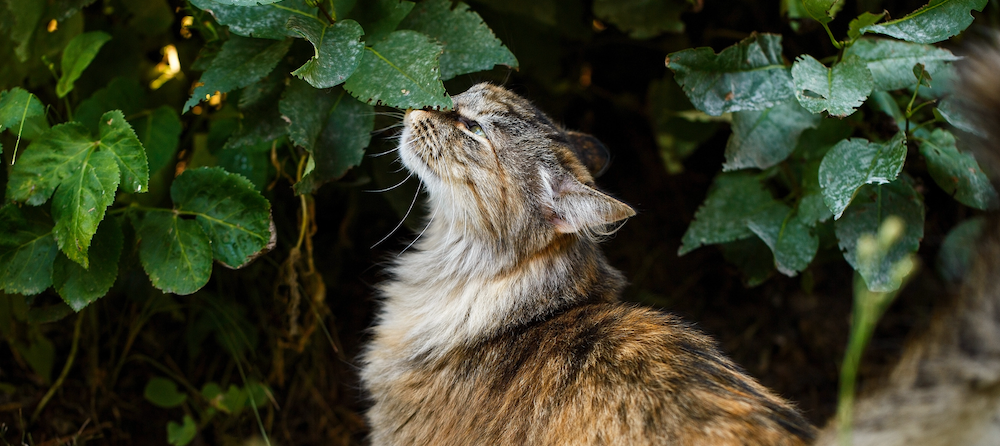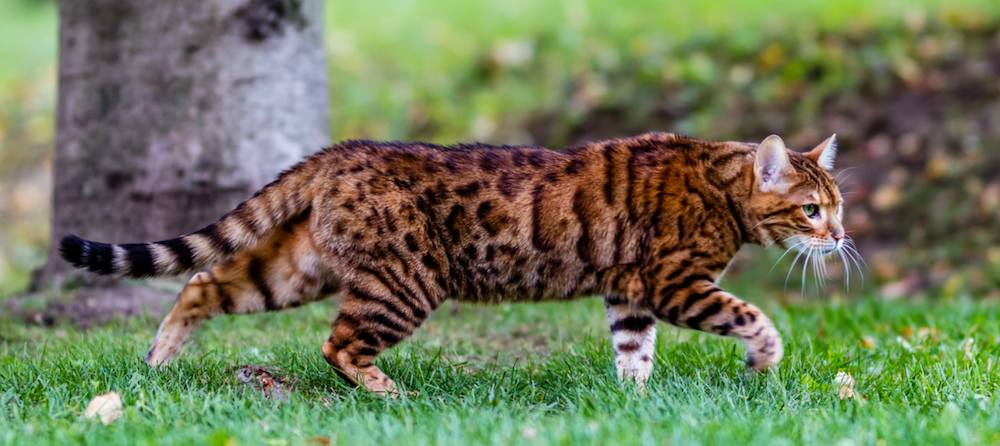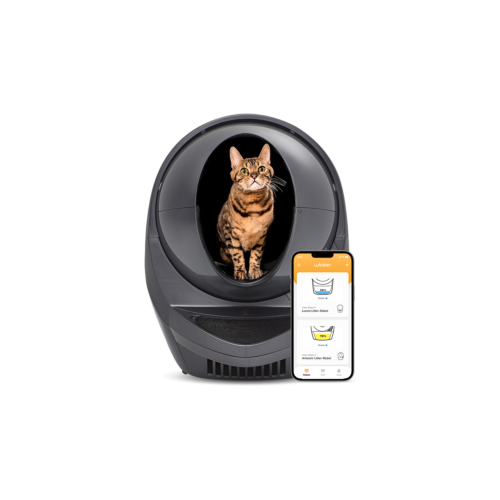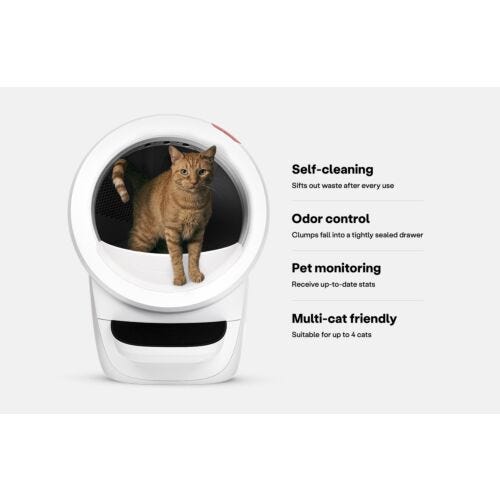Surprise: They’re not JUST being jerks. (They are a little bit, though.)
You might think your kitty has reached peak “cattiness” when she refuses to stop batting objects off your tables and countertops—but it’s not all malice on her part. Cats like to knock things over for several reasons, starting with the deep-seated need to toy with their prey. Meow!
Why do cats knock things over?
Predatory instinct
Your pudgy domesticated housecat has the same behavioral drive to hunt small, bothersome creatures as the feral running through your neighborhood—only hers is likely pent-up. Well, she’s got to get her kicks somehow! As Dr. H. Ellen Whiteley on HowStuffWorks explains, “Your cat’s instincts tell her that paperweight or knick-knack could turn out to be a mouse. Her poking paw would send it scurrying, giving her a good game (and possibly a good lunch).”
Because cats use their sensitive paw pads to explore objects in their environment, you could say your cat is hardwired to “test” the motives of your chapstick, pen, car keys, and other suspicious tabletop items by giving them a good prod.
Attention-seeking behavior
This is where the jerk part comes in, because cats can be very manipulative. But, when you consider she just wants your attention, it’s kind of sweet too.
If your cat is mobile and in the same room as you, she probably feels that she is deserving of your undivided adoration. Simply put, she has you trained to jump up and run over to her the moment you see her start to bat at an object. And because she’s found a way to snatch up your attention for at least thirty seconds, she’s not going to stop this behavior.
Playtime
Finally, there’s always the probability that your cat is turning tabletop items into impromptu toys. She may be bored of her usual passive toys. A good rule of thumb for cat parents is to participate in exercising play with your cat for at least 15 minutes per day, whether with feather wands, laser pointers, or a toy mouse dragged along the floor. If she’s properly stimulated every day, she might lose the desire to make play things out of your breakable knick-knacks!
How to stop your cat from knocking things over
Ignore her
If you suspect your cat is knocking things over to get your attention, the best thing to do is to ignore her (and put away any breakable items). Jumping to her beck and call is a way of reinforcing the behavior. Even if you’re yelling, she might feel as though your attention is a reward in and of itself.
Play with her
Leave complex toys around for her to play with throughout the day, such as a puzzle feeder. Add cat furniture to a room or two for environmental stimulation when you’re not available. And as we mentioned earlier, make sure you give your cat playtime every day so she’s less likely to invent new ways of amusing herself.
Trick her
Finally, you could pull out the big guns with double-sided sticky tape. When your cat jumps on the table, her paws will stick a little to the tape. This sensation will deter most cats from jumping back up. This isn’t the most visually appealing option, however—so you could also spritz the items that your cat is known to knock over with a smell that cats dislike, such as citrus, lavender, or pine.
Beyond wanting to keep your precious paperweights intact, you should consider the unsanitary hazards of your cat hanging out on your counters and dinner table. Remember where those paws have been and what they are trampling over on a daily basis. “Because of the risk of bacteria or toxoplasmosis spread through fecal-oral contact, it’s best to keep [cat] paws off counters, stovetops, and tables,” says Dr. Justine Lee, DVM, DACVECC, DABT.
Although you can somewhat mitigate these icky effects with a self-cleaning litter box like Litter-Robot (which leaves a clean bed of litter for your cat after every use), you might still want to curb this behavior.

8 breeds known for this mischievous behavior
Sure, all cats have been known to exhibit this jerky behavior from time to time. But if you’re waking up every morning to your precious knick-knacks littering the floor, you may have one of these facetious cat breeds.
Munchkin

With a lot of energy built up inside their tiny bodies, the Munchkin cat is regarded as a little trickster. They will find your shiny objects and steal them, hiding them as their own little game—which to them, it definitely is. If you don’t want your knick-knacks cast astray (or outright stolen), you will have to keep things tidy and neat. Trust us, the Munchkin cat is always getting into trouble.
Bombay

Bombay cats aren’t just treasured for their amazing black coats, they are also well-loved for their opinionated personalities and attention-seeking behavior. These cats love to climb (that’s the black panther in them), so placing cat trees and cat shelves around your house might stop them from knocking down knick-knacks in hard-to-reach places. If they see a ledge they want to sit on, they’ll find a way to do it.
Cornish Rex

You couldn’t ask for a more fun-loving cat than the curly-haired Cornish Rex. This breed loves to make everything into a game and appreciates when humans are involved. When the Cornish Rex gets bored, they might get a little frisky, so it’s best to pay attention and provide a stimulating environment. They love playing and do best when they have a partner in crime, AKA another kitty pal.
Snowshoe

Beautiful Snowshoe cats are playful and have bursts of energy that usually end up with them climbing to the highest points in your house. Investing in cat trees and shelves can help avoid your Snowshoe cat inevitably launching themselves onto your fireplace mantle, knocking off all your framed pictures and knick-knacks in the process. The Snowshoe is highly intelligent, so having plenty of mental enrichment toys available for your cat is essential.
Sphynx

The most famous of the hairless cats, the Sphynx can learn quickly and wants to impress their humans. They are apt to learn new tricks and are very motivated by food. Because your Sphynx is so smart, they are likely to get into things if they get bored. This includes knocking your favorite paperweights over while you sit a few feet away. While needy and lacking independence, they certainly have a mischievous side to them.
Devon Rex

Like their Cornish cousins, the wavy-haired Devon Rex not only looks like a mischievous fairy tale creature, but acts like one too. These pixie-like cats might appear flighty and hard to capture, but they are actually quite affectionate and people-oriented. They will definitely climb and inspect every nook and cranny in your space. Their cute antics are bound to push your patience from time to time, but it’s easy to forgive them.
Somali

The gorgeous, fox-like Somali cat is cunning and can cause a lot of mischief if they get bored. They’ll find ways to snoop around every inch of your home. They like to be the center of attention, even if that means creating commotion and spearheading diabolical (but fun) plans. Be sure to provide enough toys and environmental stimulation like cat furniture to subdue their strong mischievous side.
Bengal

The exotic-looking Bengal cat is very intelligent. If they get bored, they’ll let you know by getting into cabinets and toilets, destroying tissues, and hiding things that belong to you. They need stimulation for most of the day to prevent destructive behaviors (including knocking things off your shelves). They enjoy interactions with their pet parents, and even though they can entertain themselves, they want you to spend time playing with them.
Now that you know a few reasons why cats knock things over, you might be able to pinpoint your cat’s specific motive for doing so. Use these tips to curb her naughty behavior—or just sit back and let kitty do kitty. The choice is yours!
Sphynx image credit: Linnea Sandbakk via Unsplash
